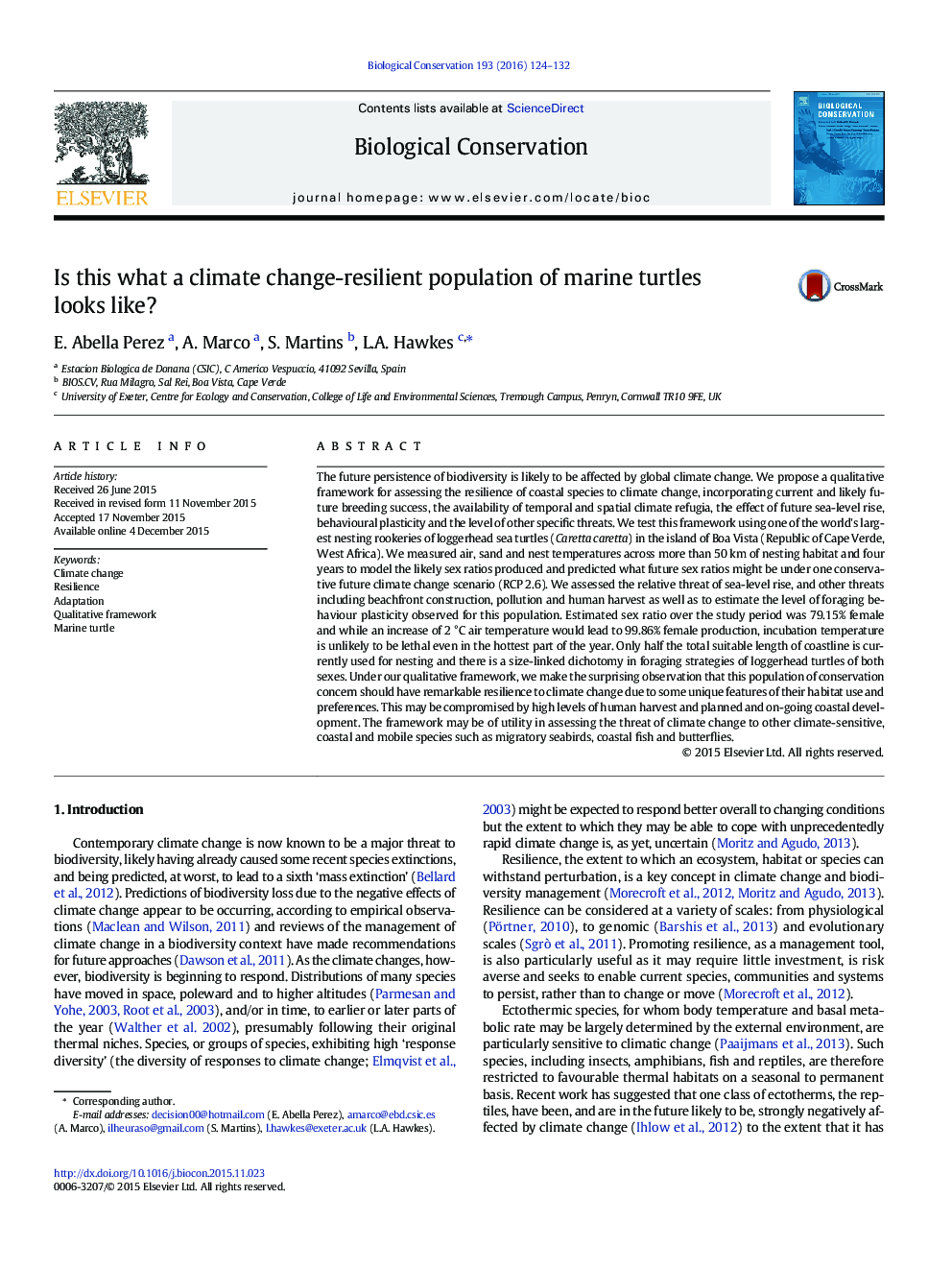| کد مقاله | کد نشریه | سال انتشار | مقاله انگلیسی | نسخه تمام متن |
|---|---|---|---|---|
| 6298859 | 1617908 | 2016 | 9 صفحه PDF | دانلود رایگان |
عنوان انگلیسی مقاله ISI
Is this what a climate change-resilient population of marine turtles looks like?
ترجمه فارسی عنوان
آیا این به این معناست که جمعیت لرزهای دریایی تغییر آب و هوا تغییر می کند؟
دانلود مقاله + سفارش ترجمه
دانلود مقاله ISI انگلیسی
رایگان برای ایرانیان
کلمات کلیدی
تغییر آب و هوا، انعطاف پذیری، انطباق، چارچوب کیفی، لاک پشت دریایی،
موضوعات مرتبط
علوم زیستی و بیوفناوری
علوم کشاورزی و بیولوژیک
بوم شناسی، تکامل، رفتار و سامانه شناسی
چکیده انگلیسی
The future persistence of biodiversity is likely to be affected by global climate change. We propose a qualitative framework for assessing the resilience of coastal species to climate change, incorporating current and likely future breeding success, the availability of temporal and spatial climate refugia, the effect of future sea-level rise, behavioural plasticity and the level of other specific threats. We test this framework using one of the world's largest nesting rookeries of loggerhead sea turtles (Caretta caretta) in the island of Boa Vista (Republic of Cape Verde, West Africa). We measured air, sand and nest temperatures across more than 50 km of nesting habitat and four years to model the likely sex ratios produced and predicted what future sex ratios might be under one conservative future climate change scenario (RCP 2.6). We assessed the relative threat of sea-level rise, and other threats including beachfront construction, pollution and human harvest as well as to estimate the level of foraging behaviour plasticity observed for this population. Estimated sex ratio over the study period was 79.15% female and while an increase of 2 °C air temperature would lead to 99.86% female production, incubation temperature is unlikely to be lethal even in the hottest part of the year. Only half the total suitable length of coastline is currently used for nesting and there is a size-linked dichotomy in foraging strategies of loggerhead turtles of both sexes. Under our qualitative framework, we make the surprising observation that this population of conservation concern should have remarkable resilience to climate change due to some unique features of their habitat use and preferences. This may be compromised by high levels of human harvest and planned and on-going coastal development. The framework may be of utility in assessing the threat of climate change to other climate-sensitive, coastal and mobile species such as migratory seabirds, coastal fish and butterflies.
ناشر
Database: Elsevier - ScienceDirect (ساینس دایرکت)
Journal: Biological Conservation - Volume 193, January 2016, Pages 124-132
Journal: Biological Conservation - Volume 193, January 2016, Pages 124-132
نویسندگان
E. Abella Perez, A. Marco, S. Martins, L.A. Hawkes,
